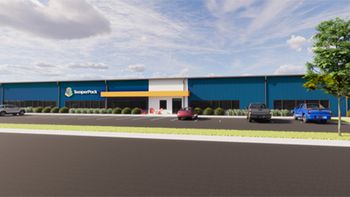
A Dive into the World of ULT
Ultra low-temperature freezers continue to change the game in cold chain
Ultra-low temperature (ULT) freezers continue to improve in functionality, allowing for more effective storage. And, amid various temperature-related bottlenecks, they must continue to meet customer needs. Dean Rainbolt, technical applications manager for the Controlled Temperature Technologies group at Thermo Fisher Scientific, joined Pharma Commerce to explore these efforts, along with the steps required to successfully build a secure cold chain.
Pharma Commerce: How did efforts around developing and rolling out the COVID-19 vaccine impact Thermo Fisher’s ULT freezer product line? What extra pressures or considerations came about as a result of this accelerated process?
As you can imagine, the need to deliver purpose-built equipment capable of properly storing mass quantities of the vaccine moved to the top of our list of priorities. We worked closely with the vaccine manufacturers to understand the precise temperature conditions required to safely store the vaccine, not only after manufacturing but at the point of distribution as well. Once those needs were established, our cold storage experts worked with our production facility to find innovative ways to increase production in a way that did not compromise our strict product quality practices. We also put together a team that focused on safe sample storage solutions.
Increased production presented many obstacles, however. Examples include difficulty finding the materials and certain parts needed for the construction of the freezers, streamlining the building process while maintaining our strict quality requirements, and distribution of so many units around the world. Qualification practices of each freezer, which are required in most pharmaceutical applications after installation, also impacted the timeline. We worked with vaccine manufacturers to streamline the qualification effort so that they could store products sooner after the freezer was installed with the same level of assurance.
What is the latest technology in this space and how is that set to impact cold chain solutions going forward?
We are continuously working on improving the performance and functionality of our ULT freezers and in the past few years have made significant improvements. Those improvements are clear from the peak variance numbers during testing, as well as the many features we’ve added that help our customers quickly identify if there is a risk of a temperature excursion that can impact the product’s efficacy. An example is the light bar feature on our ULT range, which offers a visual notification option. We also have a system that proactively monitors the health of the freezer, which notifies the customer when there may be a problem before a temperature excursion occurs.
Additionally, as the industry becomes increasingly eco-conscious, we’ve equipped our entire line of freezers with V-drive technology that ensures temperature uniformity, providing significant energy savings by adapting to the clinical environment.
In order to build a secure cold chain, what steps are required?
To build a secure cold chain, it’s critical to identify the sample path and consider the specific regulations for each segment of the cold chain. Once a strategy is in place that will ensure the safety of the samples across all potential storage locations and under varying loads and uses, the correct instrumentation and/or equipment must be purchased and qualified. Monitoring of the temperature of the samples throughout the process of manufacturing, storage, and distribution is critical. Documentation of this data must also be retained in a manner that will be available for review by auditing bodies.
What do you foresee as the ULT cold chain demands of the next few years?
Freezer availability to keep up with the ever-increasing demand for safe sample and vaccine storage space is critical. Not only do the large manufacturers of vaccines and other lifesaving products need this storage space, but smaller research facilities and universities need this support as well.
How is R&D in this space increasing the need to accelerate innovation in distribution?
Our close partnerships with many drug and vaccine manufacturers allows us to track what difficulties they face, particularly related to storage space, qualification concerns, regulation changes, and updates. Further, with the increase in temperature-sensitive therapeutics, such as in cell and gene therapy, it’s important that we continue to push the boundaries of technology to ensure we can meet the demands of future temperature storage needs.
Are there any other temperature-related bottlenecks that need to be addressed?
Identifying customer needs to ensure that the correct freezer is acquired for their specific application is critical to everyone’s success and helps ensure that critical medicines do not go to waste. If the correct freezer is purchased, based on performance and qualification requirements, the time and effort needed to install and qualify it so that samples and vaccines can be safely stored is greatly reduced.
Newsletter
Stay ahead in the life sciences industry with Pharmaceutical Commerce, the latest news, trends, and strategies in drug distribution, commercialization, and market access.




